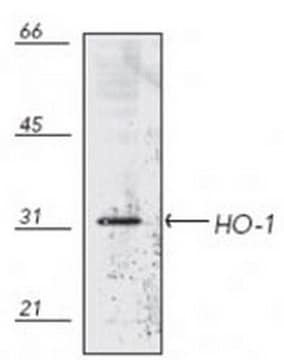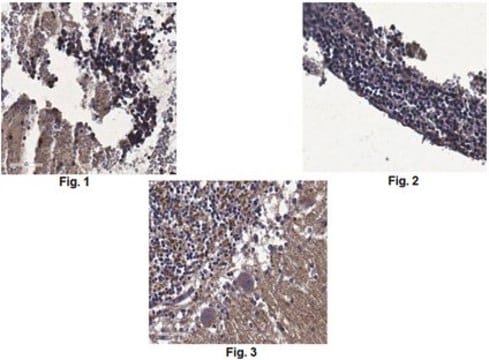MABS441
Anti-WBP2 Antibody, clone 4C8H10
clone 4C8H10, from mouse
Synonim(y):
WW domain-binding protein 2, WBP-2
About This Item
Polecane produkty
pochodzenie biologiczne
mouse
Poziom jakości
forma przeciwciała
purified immunoglobulin
rodzaj przeciwciała
primary antibodies
klon
4C8H10, monoclonal
reaktywność gatunkowa
human
metody
immunocytochemistry: suitable
immunohistochemistry: suitable
immunoprecipitation (IP): suitable
western blot: suitable
izotyp
IgG1κ
numer dostępu NCBI
numer dostępu UniProt
Warunki transportu
wet ice
docelowa modyfikacja potranslacyjna
unmodified
informacje o genach
human ... WBP2(23558)
Opis ogólny
Immunogen
Zastosowanie
Immunocytochemistry Analysis: A representative lot detected WBP2 in transfected HeLa cell fixed with 4% paraformaldehyde at 20 ug/ml
Immunoprecipitation Analysis: A representative lot immunoprecipitated transfected V5-WBP2 from HeLa cell
Signaling
Apoptosis & Cancer
Growth Factors & Receptors
Jakość
Western Blotting Analysis: 2.0 µg/mL of this antibody detected WBP2 in 10 µg of MDA-MB-231 cell lysate.
Opis wartości docelowych
Postać fizyczna
Przechowywanie i stabilność
Inne uwagi
Oświadczenie o zrzeczeniu się odpowiedzialności
Nie możesz znaleźć właściwego produktu?
Wypróbuj nasz Narzędzie selektora produktów.
Kod klasy składowania
12 - Non Combustible Liquids
Klasa zagrożenia wodnego (WGK)
WGK 1
Temperatura zapłonu (°F)
Not applicable
Temperatura zapłonu (°C)
Not applicable
Certyfikaty analizy (CoA)
Poszukaj Certyfikaty analizy (CoA), wpisując numer partii/serii produktów. Numery serii i partii można znaleźć na etykiecie produktu po słowach „seria” lub „partia”.
Masz już ten produkt?
Dokumenty związane z niedawno zakupionymi produktami zostały zamieszczone w Bibliotece dokumentów.
Nasz zespół naukowców ma doświadczenie we wszystkich obszarach badań, w tym w naukach przyrodniczych, materiałoznawstwie, syntezie chemicznej, chromatografii, analityce i wielu innych dziedzinach.
Skontaktuj się z zespołem ds. pomocy technicznej








